Hyundai Creta IVT vs Honda Elevate CVT comparison
Honda Elevate or Hyundai Creta? That’s a question a lot of you have been asking. We bring the two together to give you a definitive answer.
Published on Jun 13, 2024 11:37:00 AM
72,692 Views
Follow us on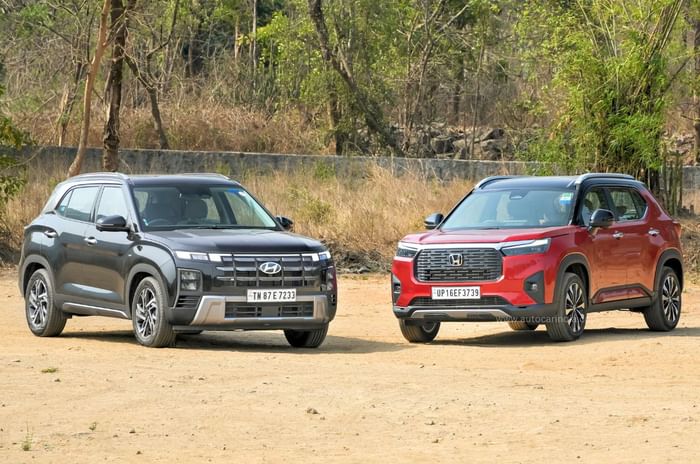
The Elevate scores on value, while the Creta goes all out to woo you.
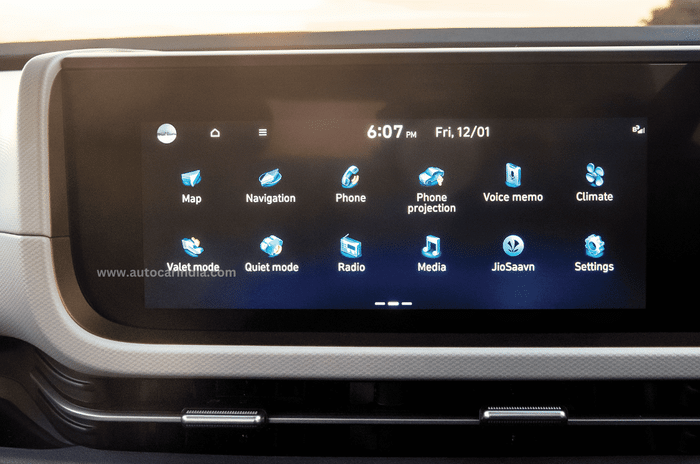
Creta’s 10.25-inch touchscreen is slick but doesn't get wireless connectivity for Android Auto and Apple CarPlay.
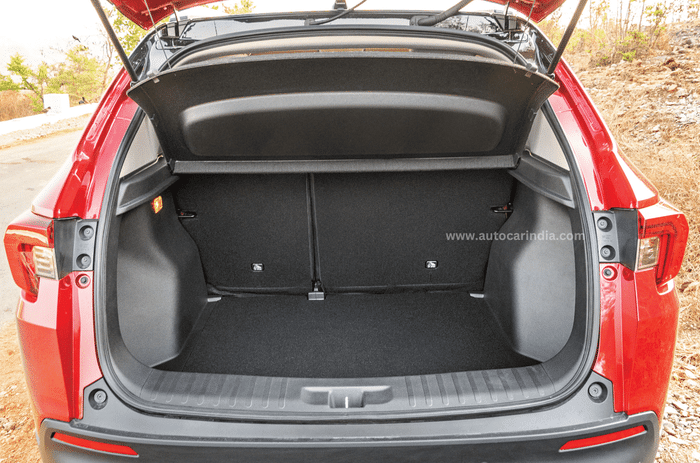
You can fit in a lot of luggage in the Honda’s boot.

Creta's well-shaped boot offers decent space too.
There was always a ready market for a right-sized and right-priced Honda SUV in India. Case in point, the Elevate. It’s been selling in steady numbers since its launch in September 2023, and for many Honda loyalists, the search for a midsize SUV starts and ends with an Elevate. However, if comparing and contrasting alternatives is your SOP before committing to a big-ticket purchase like a car, these pages will sure come in handy. With us as a benchmark is the Hyundai Creta, which has almost come to define what a midsize SUV should be. The Creta has been around longer than the Elevate, but 2024’s comprehensive update has made this an even fight. The question is, can the Elevate better the Creta?
Hyundai Creta IVT vs Honda Elevate CVT: exterior design
Both models look appealing in their own right. The Elevate is neatly styled and well turned out, and actually looks a lot larger in the metal than it does in photos. The upright bonnet and large grille give it the requisite muscle, and the long wheelbase and class-best 220mm ground clearance help the stance, too.
.png?w=700&c=0)
The updated Creta is a lot flashier in looks. The block-like pattern on the grille, the connected look for the headlamps, and the connected tail-lamps are trendy style details. To my eyes, the Creta looks its best in the N Line form, though the sporty-looking versions might not appeal to everyone’s taste.
| Hyundai Creta Price, Mileage, Specifications, Features and Variants | |
|---|---|
| Brand | Hyundai |
| Model Name | Creta |
| Hyundai Creta Price | ₹ 12.85 - 23.75 lakh |
| Hyundai Creta Range/Mileage | Petrol : 17.40 - 18.40kpl | Diesel : 19.10 - 21.80kpl |
| Hyundai Creta Specifications | SUV | 5 doors | 5 seats View All Specs |
| Hyundai Creta Features | LED headlight | 8-inch Touchscreen display | 6 airbags View All Features |
| Hyundai Creta Variants | 1.5 Petrol E | 1.5 Petrol EX | 1.5 Diesel E View All Variants |
Hyundai Creta IVT vs Honda Elevate CVT: interior
The Elevate’s interior won’t wow you, but over time you’ll appreciate it for its practicality and user-friendliness. For instance, while the dashboard looks plain, it does position the touchscreen and climate control switches within easy reach and also packs plenty of small utility spaces. The driving position is spot on (the view of the bonnet edges is a great sight), and you’ll love the large and superbly cushioned seats for the comfort they offer. Top-spec versions get leatherette upholstery, and the material extends onto the dash and the doors to up the ambience. I can’t say I’m a fan of the faux wood on the dash, though.
.png?w=700&c=0)
The Creta’s interior makes a stronger first impression. The combined effect of the lighter colours, greater detailing (such as the metallic look embellishments), and, of course, the twin 10.25-inch screens is of a more upmarket and inviting cabin. The dashboard’s low sill and large glasshouse also equals a great view out, but the seats aren’t as generous as the ones on the Honda.
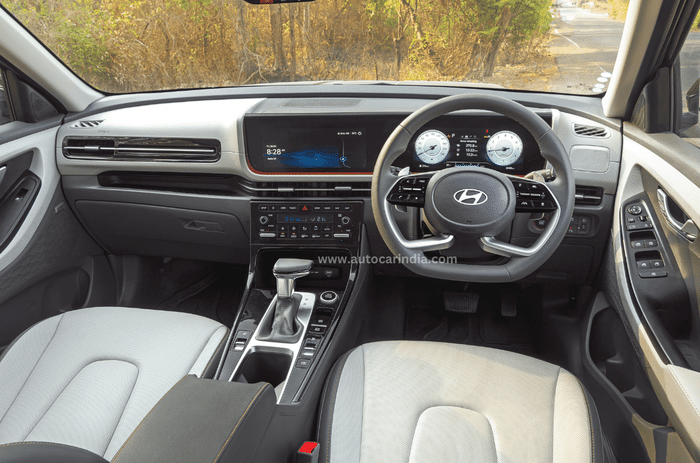
Hyundai Creta IVT vs Honda Elevate CVT: features
In terms of comfort features, the Creta in its top-spec SX (O) form has the clear upper hand with front seat ventilation, a 360-degree camera, attractive full-digital dials, dual-zone climate control, a punchier Bose sound system, an electric parking brake, and the all-important panoramic sunroof that’s a draw in its own right. The Creta’s 10.25-inch touchscreen is slick too, but frustratingly misses out on wireless connectivity for Android Auto and Apple CarPlay.
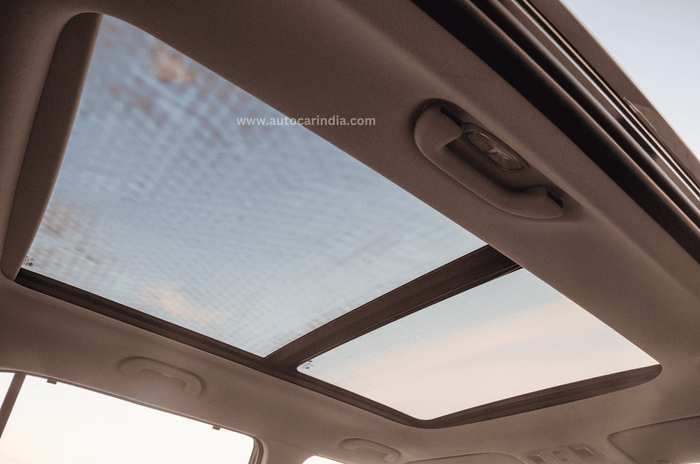
The Elevate in top-spec ZX form comes with all modern-day essentials like a nice enough 10.25-inch touchscreen with wireless Android Auto and Apple CarPlay; there’s a wireless phone charger and a single-pane sunroof, too. The Elevate is competitively priced for what it gets you, but I sense there’s room for a higher-spec model with more goodies packed in.
.png?w=700&c=0)
Shifting the focus to the rear seats, let’s start with the Creta that feels like a larger SUV, an impression only helped by the panoramic sunroof. The knee room is good, but it’s the greater cabin width that makes all the difference. There’s enough room for three to sit in comfort, but this also draws your attention to the absence of a rear centre headrest. Outboard passengers will, however, take to the sunshades for the windows, pillows for the headrests, and a well-positioned centre armrest. The seat back angle is adjustable too.
.png?w=700&c=0)
When it’s time to load the luggage, it’s the Elevate which has the clear advantage. Its 458-litre boot is way more accommodating than the Creta’s, which can hold 433 litres. You can split and fold the rear seats in both SUVs, should you need more space.
Hyundai Creta IVT vs Honda Elevate CVT: powertrains, performance
The Creta offers greater variety with the option of a 1.5-litre turbo-petrol and a 1.5-litre diesel, too. For this comparison, we’ve gone in for the base 1.5-litre naturally aspirated petrol. The engine is pleasant and closest in spec to the 1.5 naturally aspirated i-VTEC petrol that’s the sole powertrain on offer on the Elevate. CVT is offered on both SUVs and is the gearbox of choice for the test.
.png?w=700&c=0)
On to the Creta first. The 1.5 petrol with CVT might be the version that gets the least coverage, but it’s the version that makes the most sense for the average city user. The 115hp engine is really likeable and delivers a pleasant spread of performance right from the get-go. The mid-range isn’t punchy, but you get all the performance that you need when you want it.
The other highlight is refinement. The engine runs quietly and you don’t get that rubber band effect CVTs are notorious for. In fact, the smooth and well-tuned gearbox is as close to a torque converter automatic as a CVT can get, and that’s saying a lot. Drive modes help fine-tune the drive experience to an extent, but given the Creta’s chilled-out nature, I don’t see too many owners toggling between the settings.
The Honda Elevate comes into the fight with a slight power advantage and an engine with VTEC in its name. However, the Honda SUV is best enjoyed when not rushed. Throttle responses are really crisp, and the CVT gearbox also works nicely in the background. The thing is, when you want more from the engine—say for a quick overtake—and press down a bit hard on the accelerator pedal, you get the dreaded rubber band effect in all its glory. Engine revs rise without a corresponding increase in road speed, and it gets so noisy that you’ll want to back off to bring the engine back into its comfort zone. And that’s a shame because then you don’t experience the best of the engine, which is its performance. The Elevate is the quicker SUV in flat-out acceleration as well as kickdown acceleration. Still, the experience feels a lot busier in the Honda, a feeling not helped by the road noise creeping into the cabin.
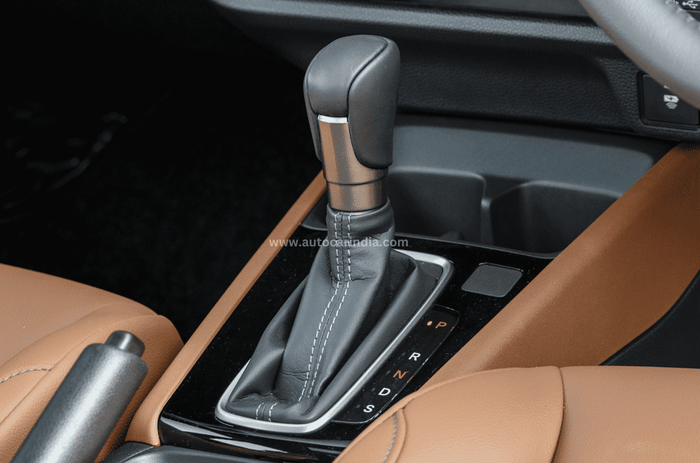
Hyundai Creta IVT vs Honda Elevate CVT: ride, handling
Both SUVs are easy to live with in the town and feel sure-footed on highway journeys. However, you will connect more with an Elevate on a winding road, though. Also, while the Elevate isn’t as absorbent as a Creta at low speeds, the Honda feels like the tougher SUV. Its ground clearance, long-travel suspension, and robust build count for a lot when the surface deteriorates. Of the current crop of midsized SUVs, the Elevate feels closest to the original Duster in this respect.
.png?w=700&c=0)
A word on safety. Both models in their 2024 avatars get six airbags and electronic stability control as standard, but neither has been crash-tested by Global NCAP or Bharat NCAP yet.
Top versions also pack in advanced driver assistance (ADAS) features, such as lane keep assist, auto emergency braking, and adaptive cruise control. While the Creta’s system is camera- and radar-based, the Elevate uses only a camera-based system. So functionality is dependent on light and visibility. Both SUVs’ ADAS functions work well enough, though they are best thought of as an added safety net rather than as something to rely on.
Hyundai Creta IVT vs Honda Elevate CVT: verdict
Before we talk prices, let’s talk of the other number of interest—fuel economy. The Creta IVT has the crucial edge on this front. Not only does it have the higher official ARAI figure but its 10.3kpl city number is well clear of the Elevate’s 8.6kpl. On the highway, the gap was smaller, though.
Finally, pricing. Talking specifically of the petrol automatics featured here, the Elevate range starts at Rs 13.71 lakh and tops off at Rs 16.43 lakh for the ZX CVT. The Creta IVT starts at Rs 15.85 lakh, with the SX(O) version featured here coming in at Rs 18.73 lakh (ex-showroom). Forego some frills and you’ll get the SX Tech trim at Rs 17.48 lakh, making it a smart pick.
The Elevate makes for a level-headed choice. It’s smart, practical, and rugged, and actually scores well on value. The peppy performance makes it great for the city, but the average refinement and fuel economy are things you’ll have to live with. More features would also make the package more enticing.
The Creta is pricier but makes the extra spend worth it due to its plusher and roomier cabin and a lot more wow features. That feel extends to the way it drives too, with better refinement and a quieter experience. It doesn’t feel quite as tough as an Elevate, but in most other departments, the Creta comes across as the more wholesome package. When you’re spending a considerable amount of money, that feel counts for a lot.
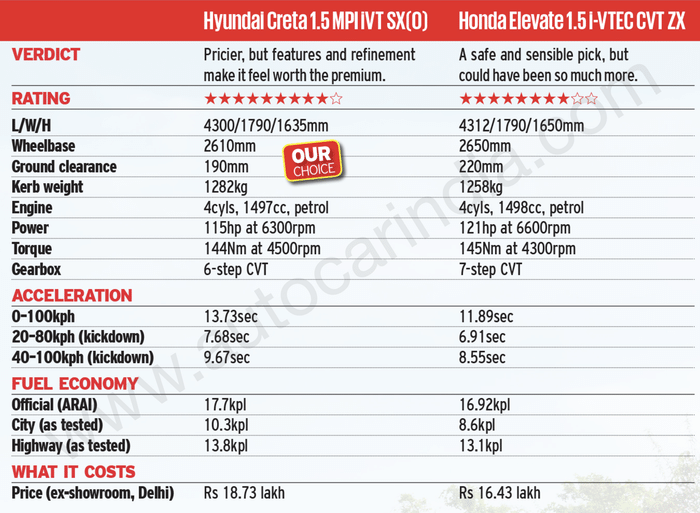
Also see:
Hyundai Creta vs Honda Elevate comparison video review
2024 Hyundai Creta long term review, 1,700km report
Honda Elevate road test, review
Copyright (c) Autocar India. All rights reserved.


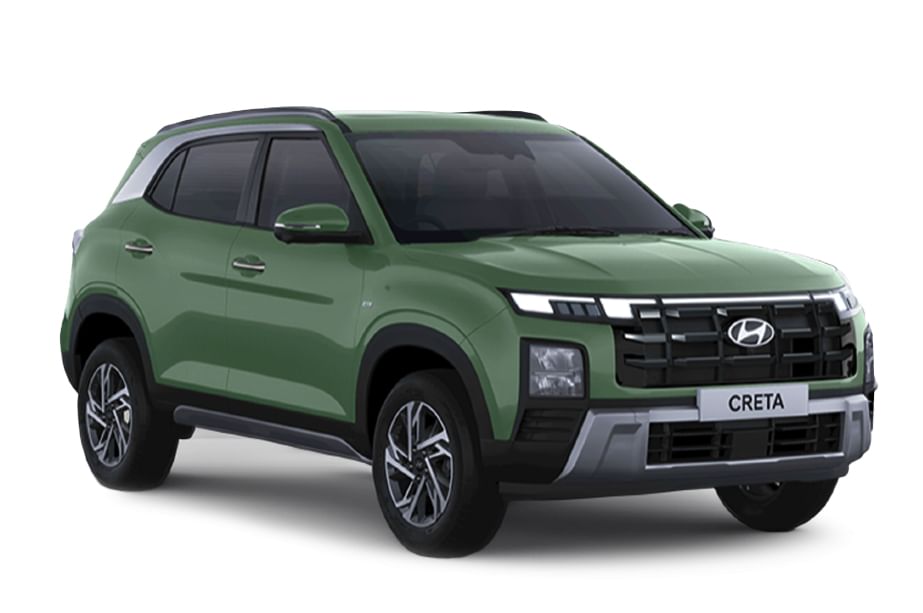





Comments
Member Login
Personal Details
No comments yet. Be the first to comment.